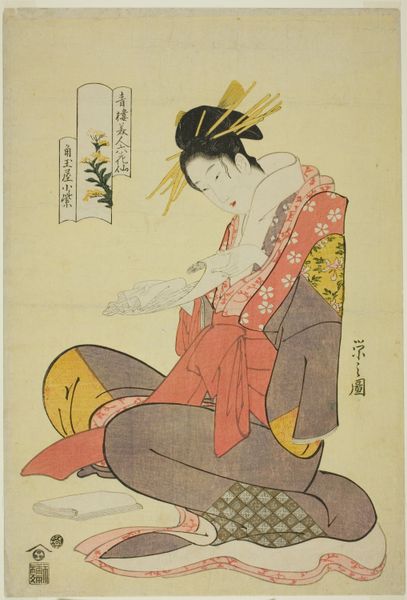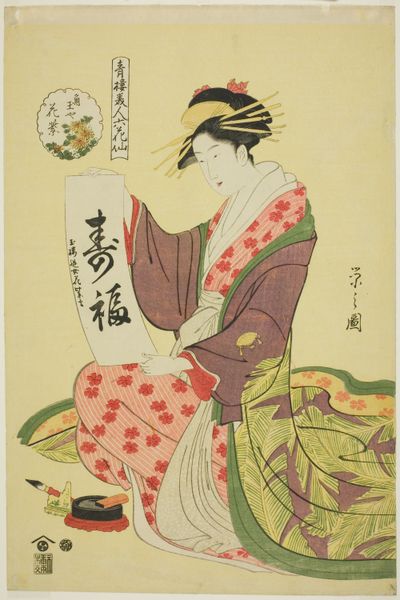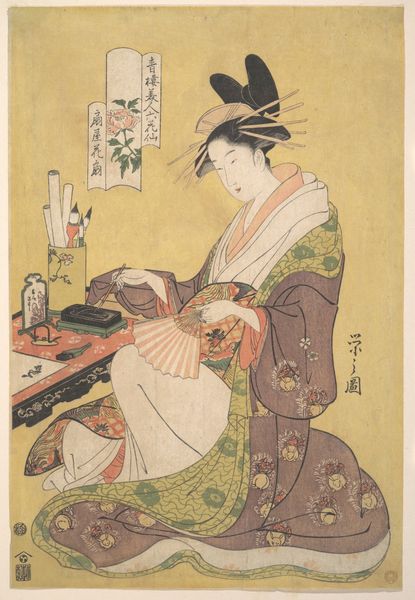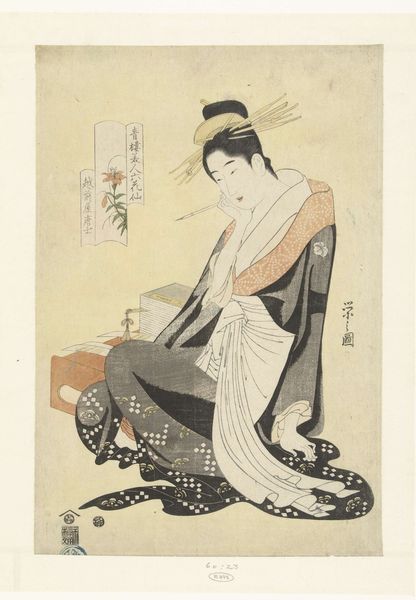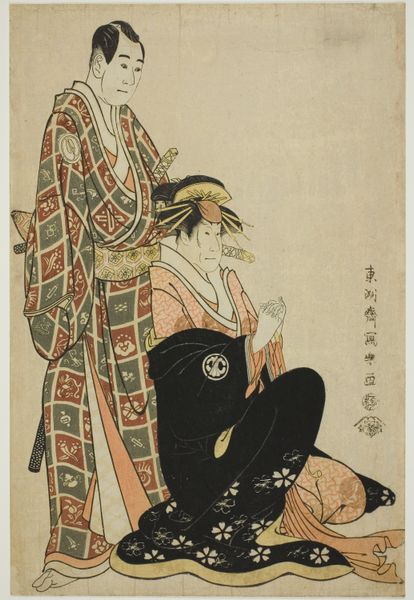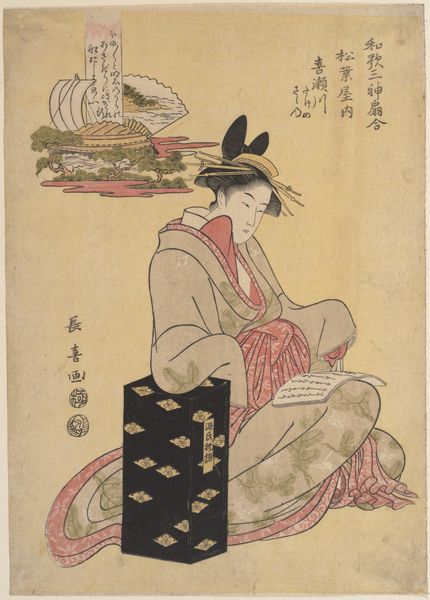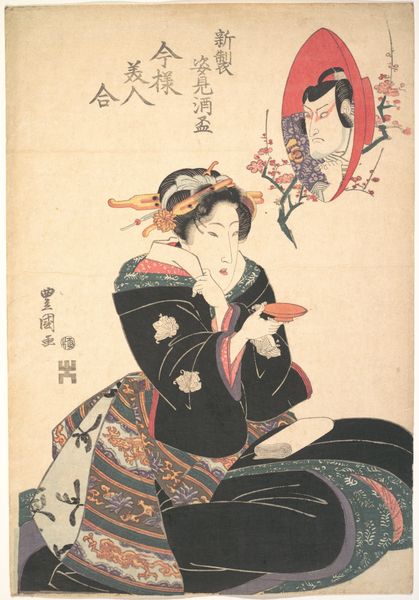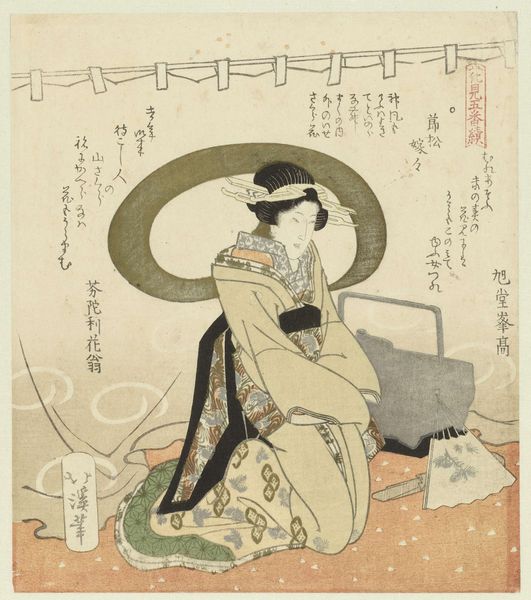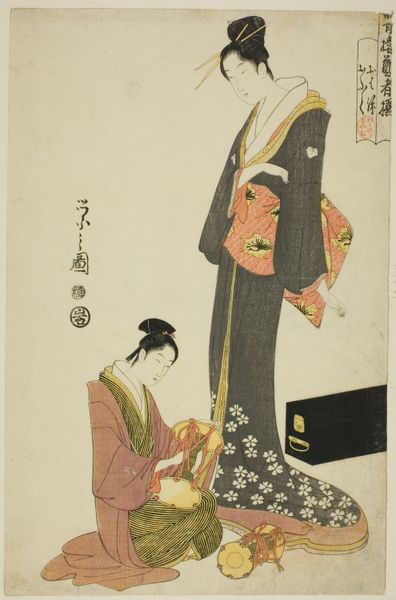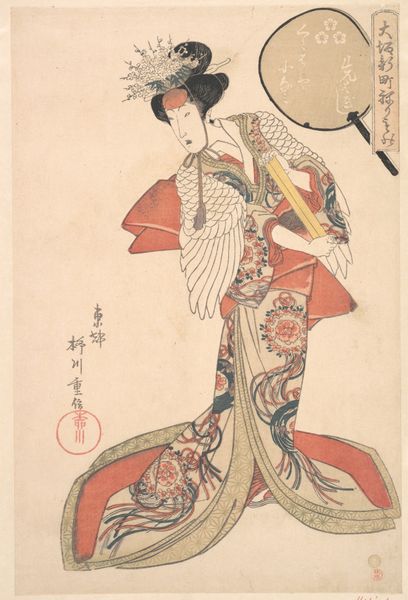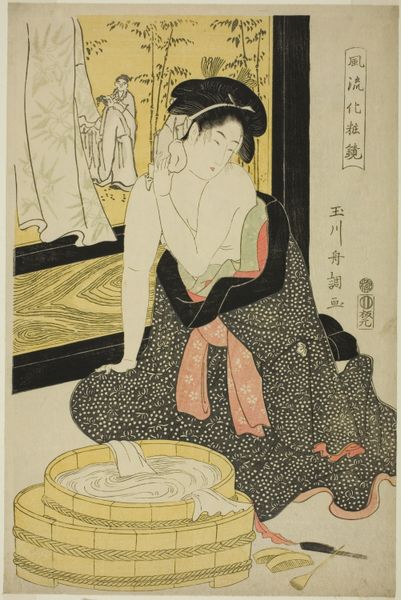
The Oiran Komurasaki of Kadotamaya Reading a Letter 1789 - 1799
0:00
0:00
print, woodblock-print
#
portrait
# print
#
asian-art
#
caricature
#
ukiyo-e
#
woodblock-print
Dimensions: H. 15 1/2 in. (39.4 cm); W. 10 1/4 in. (26 cm)
Copyright: Public Domain
Curator: It's intriguing how Eishi deploys such delicate lines and subdued coloration in this late 18th-century ukiyo-e print, "The Oiran Komurasaki of Kadotamaya Reading a Letter". Editor: Yes, there's a certain melancholy that the subtle color palette creates. The woman’s downcast eyes seem to emphasize the emotional gravity, hinting at potentially troubled circumstances during the Edo period. Curator: Precisely. Eishi masterfully organizes the composition, drawing attention to the Oiran's beautifully draped kimono and the letter she is contemplating. Observe how the gentle curve of her neck echoes the lines of her sleeves and hair ornaments, creating a cohesive and graceful visual rhythm. Editor: Thinking about it historically, an Oiran would not only need to be skilled in performing arts but also literature and calligraphy; hence her literacy becomes a symbol of social class and aspiration. I'm interested in what her patrons would have thought looking at such an intimate moment. Curator: The material qualities also suggest nuanced reading of femininity and class: notice the layering effect and how each precisely applied woodblock is laid atop one another creating rich textures of fabric folds, and of course, hair ornaments that point to upward mobility and status. The flatness of the paper simultaneously emphasizes the two-dimensionality of the image, paradoxically deepening our awareness of surface. Editor: And this careful articulation speaks volumes about the lives of Oiran in general. The image becomes both a symbol of desire and a commodity within the floating world of Edo-era pleasure quarters. The serene aesthetic stands in contrast to the intense economic pressures on women occupying that echelon of society, performing rituals of beauty and social grace in service to complex webs of wealth accumulation and cultural expectation. Curator: This tension between serene form and latent socio-economic anxieties, elegantly balanced in Eishi’s craft, makes "The Oiran Komurasaki of Kadotamaya Reading a Letter" visually compelling, but also, incredibly significant in unpacking class, beauty, and womanhood within Edo-era Japan. Editor: A beautiful print—it truly demonstrates how form and history intersect, providing not just an artistic but an important socio-cultural reflection.
Comments
No comments
Be the first to comment and join the conversation on the ultimate creative platform.
